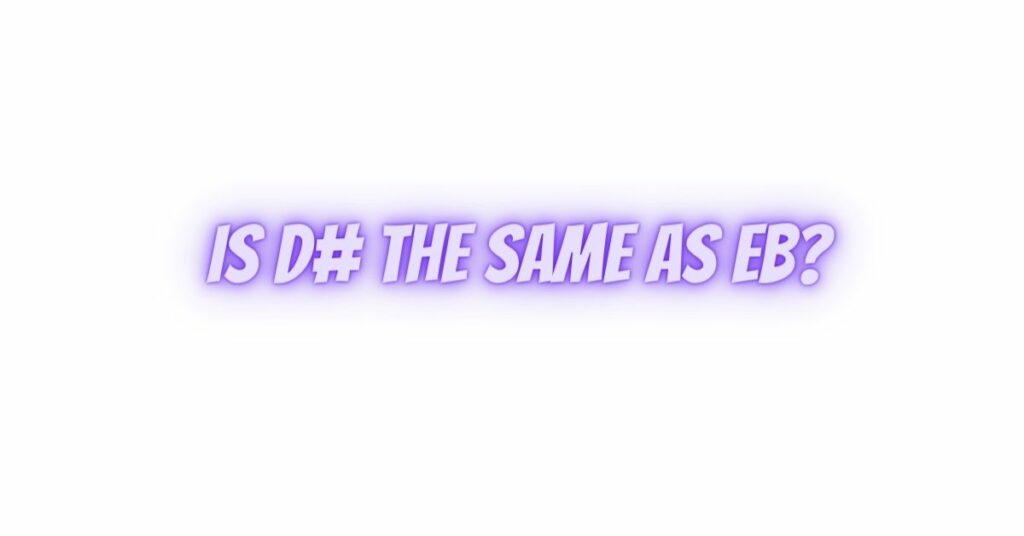In the world of music theory, notes and their notations can sometimes appear confusing due to enharmonic equivalents. D# and Eb are perfect examples of this phenomenon, representing the same pitch but written differently. This comprehensive guide aims to shed light on the relationship between D# and Eb, clarifying their roles and explaining when and how they are used in music.
1. Enharmonic Equivalents:
Enharmonic equivalents are notes that share the same pitch but have different names or notations. D# and Eb are enharmonic equivalents, as they represent the same musical tone, often creating confusion among musicians, especially beginners.
2. D# and Eb on the Keyboard:
On a standard piano keyboard, D# and Eb look identical since they share the same key. This key is placed between the white keys for D and E, illustrating the enharmonic nature of these two notes.
3. Enharmonic Spelling:
Enharmonic spelling refers to the choice of notation between two equivalent pitches, such as D# and Eb. The decision often depends on the key signature, context, and harmonic structure of the music.
4. Key Signatures:
In many cases, the choice between D# and Eb depends on the key signature of a piece of music. For example:
- In the key of D major, the third note of the scale is D#. Therefore, any D notes in that key signature would be notated as D#.
- In the key of Eb major, the third note is Eb. Any occurrences of the third note would be written as Eb.
5. Context and Harmonic Function:
The choice between D# and Eb is often influenced by the function and context of the note in a musical passage. For instance:
- In a D# major chord, the D# note is used to maintain the chord’s structure, spelling the notes as D#-F#-A#. In contrast, in an Eb major chord, the notes are spelled as Eb-G-Bb.
- In harmonic progressions, the choice between D# and Eb can be influenced by the following chords and functions. For instance, if a chord progression involves an A# major chord (A#-C#-E#), the E# note is spelled as E# to maintain consistency with the key and the chord’s structure.
6. Practical Examples:
Consider the following practical examples to see the use of D# and Eb in various contexts:
- The 7th degree of the A major scale is G#, making the chord A-G#-C#. However, in the key of C major, the same 7th degree is spelled as Ab, resulting in the chord A-Ab-C.
- In a piece of music written in the key of F# minor, the leading tone (7th degree) is E#, maintaining the harmonic function and spelling in that key.
7. Conclusion:
In summary, D# and Eb are enharmonic equivalents, representing the same pitch but written differently based on the context, key signature, and harmonic function of the music. Understanding when and how to use D# or Eb in music is crucial for maintaining consistency, clarity, and harmonic integrity in musical compositions and performances. Musicians and composers should be aware of these nuances to make informed decisions when notating and playing music.


